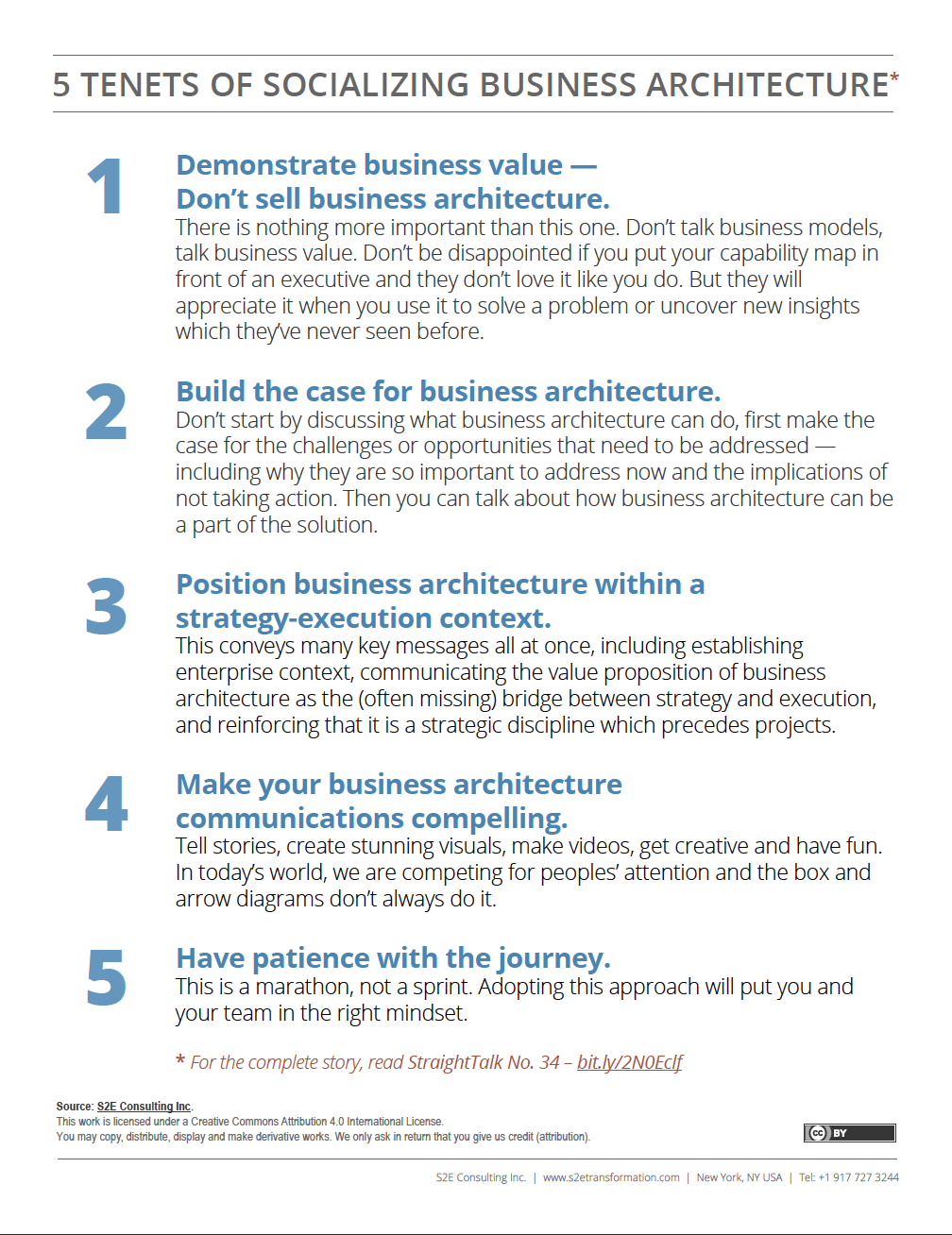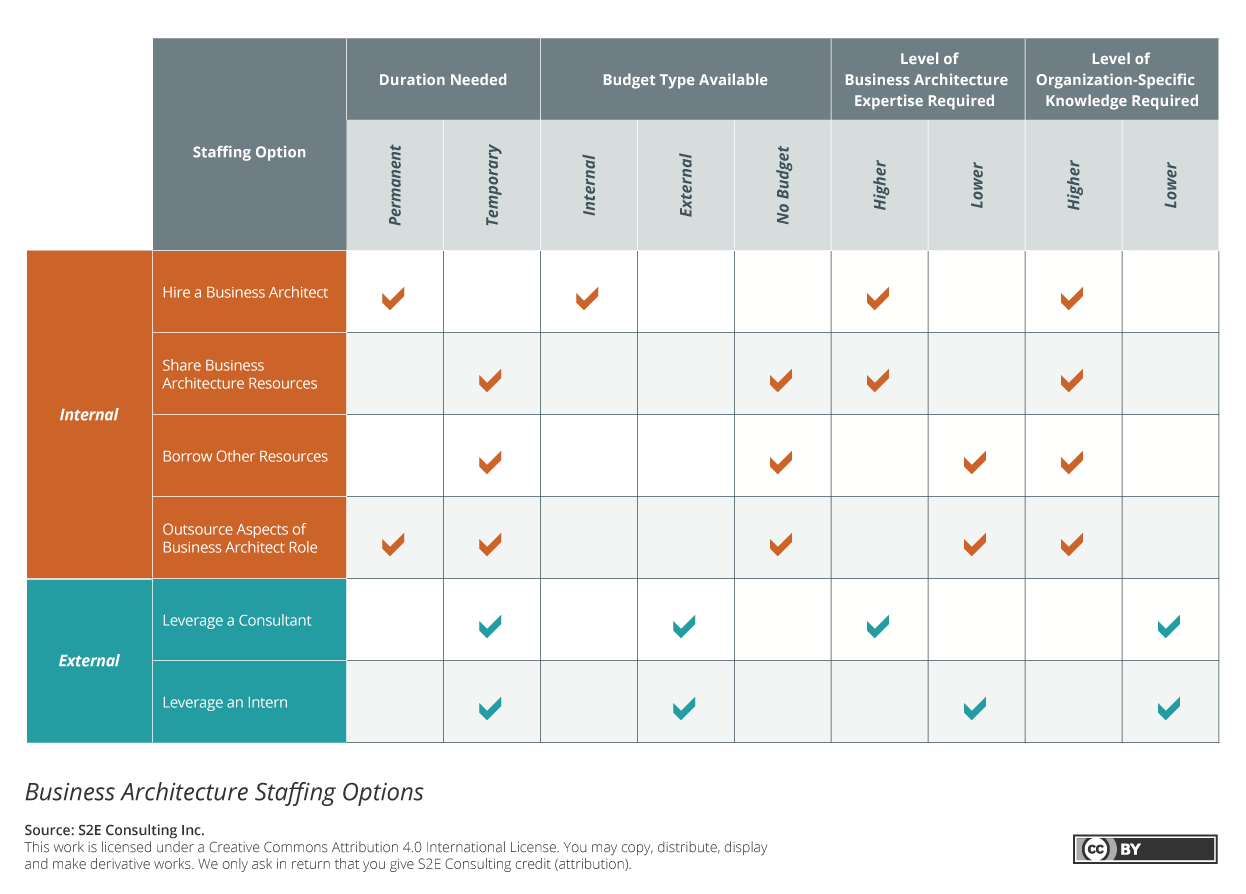
This is our last round in the “How To Deal” series. In this post, we will straight talk on one of everyone’s favorite topics: how to socialize and build buy-in for business architecture within an organization. Yep, we’re talking about business architecture + marketing = business marketecture. And sometimes we need a lot of it.
Is it difficult to socialize business architecture in all organizations – or just ours?
First, we’re going to start with a whole bunch of “you’re not crazy” and “you’re not alone.”
- If you feel like it’s hard – you’re not alone. While socializing business architecture is getting easier than it was because the discipline has become more ubiquitous, it’s still hard. For everyone. Even business architecture teams with top leadership support still have challenges.
- If you feel like socializing business architecture takes a lot of time and focus – you’re not missing anything. You are a business architect and a business marketect, especially depending on the role you play within your business architecture practice.
- If you feel like the concept and value of business architecture is so obvious and you’re not sure why everyone else can’t see it – you’re not crazy. Business architecture is about the big picture and not everyone thinks this way. Consider it one of your gifts.
Why is it so difficult to socialize business architecture?
Here’s some context to keep in mind.
- Relatively speaking, business architecture is “new” – Though rapidly maturing globally, the formalization of business architecture as a discipline is relatively “new” in comparison to some other disciplines that have existed for decades like business process, business analysis or project management.
- Business architecture is not “standalone” – Business architecture is intertwined throughout the strategy execution life cycle and plays a role to help other functions and disciplines more effective.
- Business architecture challenges behavior and norms – At the heart of it, business architecture is about much more than the architecture. It’s about shifting the mindset to enterprise level thinking, cross-business unit collaboration, transparency and a new vision for strategy execution.
How have other organizations been successful at this?
Talk to just about any successful business architecture leader or practitioner and you’ll find there is one common key to success, regardless of geography, industry or location: demonstrate business value. Continually. Your results will define what business architecture is and the value it can provide – more than you could ever describe in words. Focus on the “business” part of “business architecture.”
To expand upon that, here are five tenets of business architecture socialization that will help to guide you.
- Demonstrate business value – Don’t sell business architecture.
There is nothing more important than this one. Don’t talk business models, talk business value. Don’t be disappointed if you put your capability map in front of an executive and they don’t love it like you do. But they will appreciate it when you use it to solve a problem or uncover new insights which they’ve never seen before.
- Build the case for business architecture.
Don’t start by discussing what business architecture can do, first make the case for the challenges or opportunities that need to be addressed – including why they are so important to address now and the implications of not taking action. Then you can talk about how business architecture can be a part of the solution.
- Position business architecture within a strategy execution context.
This conveys many key messages all at once, including establishing enterprise context, communicating the value proposition of business architecture as the (often missing) bridge between strategy and execution, and reinforcing that it is a strategic discipline which precedes projects.
- Make your business architecture communications compelling.
Tell stories, create stunning visuals, make videos, get creative and have fun. In today’s world, we are competing for peoples’ attention and the box and arrow diagrams don’t always do it.
- Have patience with the journey.
This is a marathon, not a sprint. Adopting this approach will put you and your team in the right mindset.
Here’s a version of the Five Tenets for your wall.

What practices work well to socialize business architecture in other organizations?
Business architecture teams have done all sorts of creative things to socialize business architecture such as:
- Presentations by business architecture leaders, team members and business advocates, shared in person or through a video.
- Success stories describing how business architecture helped with quotes and measurable results.
- Business architecture content shared on posters and electronic means in public areas.
- A dedicated room or area to take people through “wall walks.”
- Interactive websites or mobile applications to facilitate the understanding and usage of business architecture.
Should we socialize business architecture widely right away?
Some business architecture teams build buy-in quickly and decide to share with executives at the C-level and wider audiences throughout the organizations relatively early in their journey. However, most teams socialize within a smaller sphere of the organization and then socialize more widely once they have proven successes to share and the ability to scale.
Either way, executive business sponsorship and advocacy is absolutely key to long-term success.
The best answer to this one depends on your situation and organizational dynamics.
Who should socialize business architecture within an organization?
The leader of the business architecture team (and their leaders) should play an ongoing role in socialization. Sometimes others on the team may be responsible for socialization, either formally or informally, as part of their role as well. However, every business architect should be comfortable being a business marketect to some extent – with the ability to consistently describe the discipline and its value.
Also, build advocates for business architecture across the organization who can help you tell your story and spread the word.
Anything else?
In your enthusiasm to share business architecture, remember that people are thinking about other stuff. Big picture and long-term thinking may or may not come naturally to them. Even if they believe in the concept, they may have pressure to focus on other priorities. Adoption of the concept might require them to do more work or do things they don’t want to do like be more accountable, transparent or collaborative than they are today. They may not like the fact that they did not introduce the idea first.
The mindset with which you approach business architecture socialization is important. You have to approach it strategically and from the human perspective. It’s not an activity to check off, but rather a human puzzle to be solved.
Closing Thoughts: We are all in this together, and we are forging a new way of thinking and working across the globe. When it gets hard, remember why you signed up for this business architecture journey. Business architects are highly passionate people who believe in change and the art of the possible. Boldly taking this journey promises to make our organizations – and all of us as individuals – better for it.
More Good Stuff…
The Value of Business Architecture (S2E white paper): Just in case you missed it, this white paper provides a good starting point for you to learn about the value of business architecture so that you can come up with your own story.
Conquering the Business Architecture Summit (S2E white paper): In case you need a little reminder, this passion piece shares a vision of what is possible for a business architecture practice and some wisdom on how to get there, using a mountain as a metaphor.
Business Architecture Case Studies (various organization): Learn from all of your friends. There are years of case studies presented by business architecture leaders and practitioners publicly available on the Business Architecture Guild® website on the Public Resources page. Guild members can also watch interviews with business architecture practitioners.
Seth’s Blog (Blog): This blog by Seth Godin is pure gold, providing you with marketing and human wisdom daily. Be sure to check out “You Were Right All Along” blog post for a good reminder about business architecture socialization.
Akimbo (Podcast Series): This podcast series by Seth Godin is more pure gold. Be sure to check out “The Long Term” podcast for more good food for thought about business architecture socialization.
To Create Demand, Follow Five Key Rules, Without Fail (Washington Business Journal): Good advice on how to create demand for anything, including business architecture.
94 Mind-Blowing Strategy Execution Statistics (Boardview): Here are a load of useful statistics that you can use to build your case for business architecture.
How to Get Your Ideas to Spread (TED Talk): There are some great takeaways here for business architecture in this TED Talk by Seth Godin. Make it remarkable.


